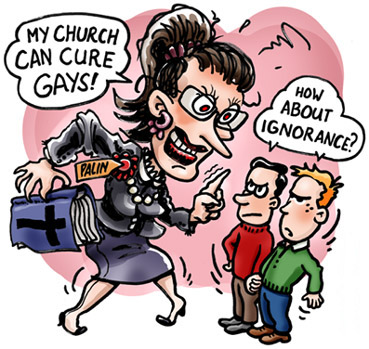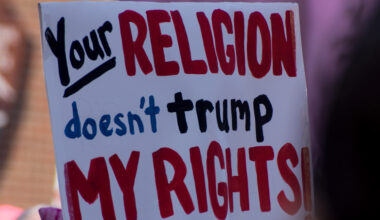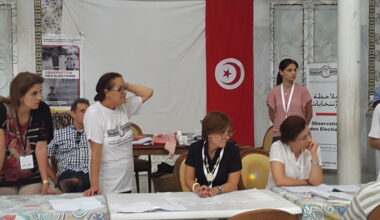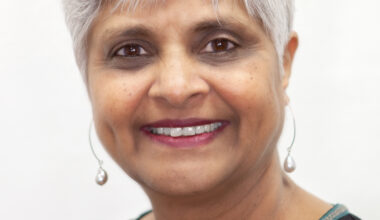
In December 2021 the UK government announced plans for a Bill to end conversion therapy. The plans were withdrawn in early 2022, following controversy about the implications for treatment of children with gender dysphoria, but with a promise of later reintroduction. The UK, however, is only one of many countries seeking to legislate on this issue. Several have already done so, and others have laws in hand.
‘Conversion therapy’ is an umbrella expression for attempts to change a person’s sexual orientation or gender identity. The term covers a wide spectrum of activities, from ‘medical’ treatment to religious rituals like exorcism. (Some would argue it also includes forced marriage – the complete dismissal of homosexual orientation as a factor in selfhood or personhood.) Of course, ‘conversion therapy’ is a misnomer. ‘Therapy’ implies that the condition being treated – same sex attraction or different gender expression – is a pathology requiring medical or some other intervention. It harks back to a time when same sex attraction was seen as a perversion or mental illness, which could be cured or ‘converted’ by treatment. I use it only as a convenient shorthand.
In the past, and in some parts of the world even today, ‘conversion therapies’ have included shockingly barbaric practices such as castration, lobotomy, and aversion treatment that aims to modify behaviour by, for example, subjecting a person who is experiencing same-sex arousal to repeated electric shock or the smell of faeces. However, many versions of conversion therapy do not involve physical intervention, but rather psychological pressures in the form of group prayer or ‘pastoral’ counselling by a church minister.
Here I want to focus on measures to tackle conversion therapy in religious settings. Conversion therapy as a supposedly medical practice endorsed by health professionals continues in some countries: China, Iran and Indonesia are among the worst offenders. But in much of the civilised world this form of conversion therapy has been denounced by professional associations and regulators.
In the UK in 2012, the British Association for Counselling and Psychotherapy condemned ‘any psychological treatment such as “reparative” or “conversion” therapy which is based on the assumption that homosexuality is a medical disorder or based on the premise that the client/patient should change his or her sexuality’. Similar language has been adopted by other professional bodies such as the Royal College of Psychiatrists and the British Psychological Society.
This is not to say that these prohibitions are watertight. Some rogue therapists are working hand in glove with extreme religious groups and a lot more needs to be done to regulate them. But in the UK, as across much of the civilised world, professional bodies and regulators have taken a clear stand against conversion therapy. There remains an ongoing debate amongst medical and therapeutic professionals as to how any prohibition of ‘conversion therapy’ might affect the treatment of children with gender dysphoria, but this is a subject for another day. However, while conversion therapy as performed by health professionals has declined in Western countries, following the depathologisation of same-sex attraction, faith organisations have become the most active practitioners of it. For this reason, legislation in the UK and other western countries needs to focus particularly on religious contexts.
Religious attempts to change sexual orientation or gender identity come in many forms. Some involve physical assault. Victims from around the world have described exorcisms to ‘cure’ homosexuality which involved being stripped naked and flogged repeatedly during ‘deliverance sessions’ until the victim passes out, overwhelmed by pain and exhaustion. A form of exorcism used in some mosques (‘djinn expulsion’) includes physical restraint and high volume reading of the Koran through screaming in the ears of the victim; the exorcist supposedly speaks to the bad spirit or ‘djinn’ about its exact location in the body and forces it to exit the body, often by applying physical pressure to the body part where the ‘djinn’ allegedly resides. In Malaysia an Islamic doctor published a five-step ‘treatment’ for homosexuality to rid a victim of ‘demons’ supposedly responsible for same sex attraction. This included spraying the victim’s eyes with chewed black pepper, after reciting verses from the Koran. In Nigeria a lesbian survivor of ‘conversion therapy’ described having oil poured into her vagina. In the UK, a client of mine who attended an evangelical church within the Church of England, and who was highly vulnerable at the time, alleges that he was instructed to have sex with a female cleric in order to ‘cure’ his same sex attraction. Other vile practices of this kind also occur in the UK, where fundamentalist religious groups are growing, even if they often go unreported.
Other religious practices – some using church ‘counsellors’ or ‘therapists’ with bogus professional qualifications – may not involve actual physical assault, but a high degree of group pressure and psychological coercion, including relentless targeting and verbal denunciation of a victim’s sexual orientation. Some practices involve prayer – organised or informal – or private ‘pastoral’ conversations with a church minister, in which the victim is encouraged to feel shame about his or her sexual orientation or gender identity.
All these practices have the potential to cause serious harm. Legislating against them may not always, however, be straightforward. Practices which involve physical violence or sexual assault are easier to address legally. Such practices may already be illegal under current criminal law, but in any event, legislating to prohibit them, or to make them an aggravating feature of existing criminal offences, does not involve any novel legal principle. With some exceptions, such as boxing and ritual circumcision, the law in England and Wales has tended to take the view that a victim cannot ‘consent’ to the deliberate infliction of actual bodily harm. This approach can be seen in the legislation on female genital mutilation: FGM is illegal in this country even if committed on an apparently ‘consenting’ adult. Thus legislating to outlaw conversion therapy where it involves the infliction of physical harm is merely bringing the law into line with existing criminal law in other areas.
The more difficult dilemma is whether the law should intervene in religious practices where no physical assault or touching is involved, and where the person whose sexuality or gender identity is being targeted is a consenting adult. Prayer is speech; some would say, therefore, that it should not be prohibited at all, and certainly not if the object of the prayer freely consents to it. To legislate in this area, some would argue, is to involve the law in policing private conversations: a dangerous slippery slope.
The most comprehensive measure against conversion therapy anywhere in the world, enacted in the Australian state of Victoria, has been criticised on precisely these grounds. The Victorian law bans conversion therapy in the form of ‘religious practice, including but not limited to, a prayer-based practice, a deliverance practice or an exorcism’. Given the limitations imposed on religious ritual and speech, evangelical groups in Australia have complained volubly about secular overreach and incursions into religious freedom.
On the other hand, campaigners against conversion therapy have argued that without such an all-embracing ban, much psychologically harmful conversion therapy will simply continue. When the UK government’s legislative proposals were announced in December 2021, they explicitly excluded private prayer and casual conversations, and provided that, except where physical assault is involved, a practice would not be illegal where the person receiving it was a fully capacitous adult giving informed consent. Some campaigners against conversion therapy criticised these proposals as inadequate. Jayne Ozanne has argued for an outright, unqualified ban: ‘Anything short of a full ban will allow this degrading and inhumane practice to continue,’ she said in an interview with Open Democracy. ‘The very lives and well-being of LGBT people are at stake.’ Campaigners have argued persuasively that informal conversion therapy in the guise of prayer or pastoral conversations can be as pernicious as other forms, and that the concept of ‘informed consent’ is meaningless in many fundamentalist religious contexts where the social pressures to conform are often overwhelming.
How should legislators deal with these conflicting arguments? As a secularist and supporter of free speech I oppose religious interference with free speech, for example through blasphemy laws. To be consistent, I should also want to protect religious freedom of speech. But conversion therapy is known to cause appalling lifelong harm and, as I have previously argued in the Freethinker, an important principle when it comes to debates about religious freedom is that religion should not be exempt from laws, or legal principles, of general applicability. The law already criminalises coercive control in domestic contexts, so to that extent, it can and does become involved in policing some private speech, but only in circumstances where serious psychological harm is caused, and the victim is not truly consenting.
Thus, if we want to approach conversion therapy in a way which allows for legal consistency between religious and non-religious harms – an important governing principle for any legislation – we might legitimately criminalise certain forms of seriously harmful and coercive private religious activity or speech. The question of how far conversion therapy should be prohibited, therefore, is closely bound up with the issue of consent.
Plainly, children or adults lacking legal capacity cannot ‘consent’ in any meaningful sense to conversion therapy, and legislation should make that crystal clear. As to whether a law should allow for adult consent to religious conversion therapy, most jurisdictions which have legislated have stopped short of unqualified bans which permit no ‘adult consent’ exception, but many have included provisions which aim to ‘keep a close eye’ on consent. In 2016, Malta became the first country in Europe to ban conversion therapy. The ban covered minors under 16, people suffering from a mental disorder and people deemed ‘vulnerable’ by a court, taking into account their personal circumstances. In other words, whilst in principle a person might have the capacity to consent, consent is nullified where the person is a child or a vulnerable adult. The UK government’s proposals set out in December 2021 adopted a similar approach: in principle it could still be possible to consent, but the law would be astute to prohibit coercion, and children and vulnerable adults could not consent at all.
The concerns voiced by campaigners about a consent ‘loophole’ are entirely understandable. In practice, consent in fundamentalist religious settings is very often vitiated by the power dynamics of those settings, where the personal cost of challenging clerical authority and community pressure is too high for most people to bear. This is a very powerful point.
In legal terms, however, the proposition that, even in the absence of coercion, a capacitous adult could never freely or genuinely consent to non-physical conversion therapy is probably unsustainable. Of course, somebody in thrall to a fundamentalist religious belief and who rejects rationality, science and evidence might be said to be philosophically ‘unfree’. Legally, however, capacitous adults not subject to coercion can, in principle at least, choose to believe that their own sexual orientation is wrong, and that they need help to change it. And an attempt to legislate that right away would almost certainly invite a challenge under Article 9 of the Human Rights Act (the freedom of religion and belief article). The critical question in any individual case is whether, given the pressure and coercion that we know operate in fundamentalist religious communities, consent is truly genuine. That is an issue which can only be determined on the facts of the individual case – but the crucial thing is to ensure that the true facts are fully known and understood, so that the coercion which operates in so many cases is properly exposed.
The better legislative approach, therefore, is not to assert that consent can never be freely given, but to focus on ensuring that the issue of consent is properly addressed in every case. This would involve defining ‘coercion’ from a legal perspective and, by extension, defining ‘consent’. But crucially, it would also involve enforcement: making the law effective is as much a practical as a legislative challenge. It is one thing to talk about the coercion and pressure that often occur in closed religious communities. But what are we actually going to do to call it out when it happens and to help those on the receiving end? Unless we create mechanisms by which those who experience coercion can complain and be supported, then legislation alone may be ineffective. As was observed in IICSA, many religious settings are less regulated than donkey sanctuaries, and mechanisms to complain about abuses in them are sorely lacking. Assuming that minors are treated as incapable of giving consent, this is a particular issue for vulnerable young adults, whose vulnerability may not be particularly well understood and recognised by the outside world.
In this respect the Victorian legislation is particularly progressive: it creates a ‘civil response scheme’ within the Victorian Equal Opportunity and Human Rights Commission which has responsibility not only for promoting awareness of the dangers of conversion therapy but for investigating individual violations. As the Commission says, ‘the Act empowers us to consider and respond to reports of change or suppression practices from any person, as well as launch investigations and enforce outcomes where there is evidence of serious or systemic change or suppression practices.’ The UK government’s proposals on banning conversion therapy talked vaguely about ‘ensuring that statutory services recognise the problem and act’, but offered little practical detail about how that might be achieved, especially given that statutory services such as police and local authorities are already underfunded and overwhelmed.
Unless we address the question of enforcement, any ban on conversion therapy may bring insufficient benefit to its victims. Legislation against conversion therapy in religious settings is fully justified. But in terms of helping victims it can only be a starting point, not the end of the matter.








1 comment
As usual Richard provides a persuasive and cogently argued article which I find myself nodding along with in enthusiastic agreement, most of the time. But I am left with a problem which seems to be recognised but then shelved as too difficult. If legislation leaves open the possibility of a ‘consent loophole’ are we not conceding that it is legitimate to regard being gay as a social or moral problem?
Your email address will not be published. Comments are subject to our Community Guidelines. Required fields are marked *
Donate